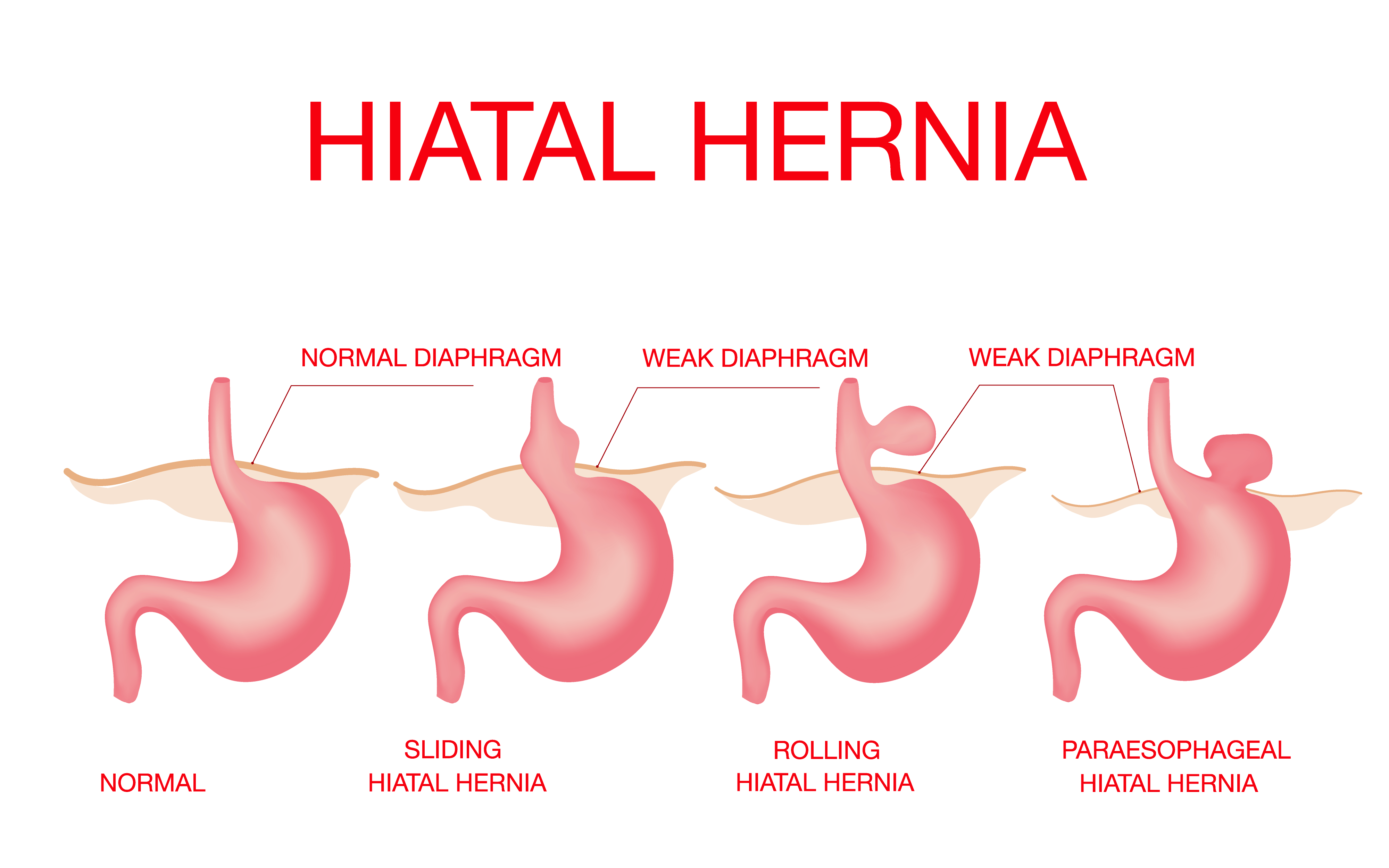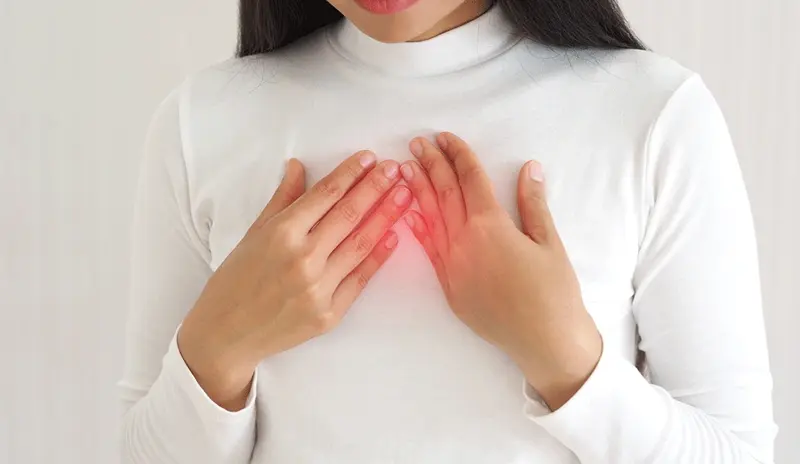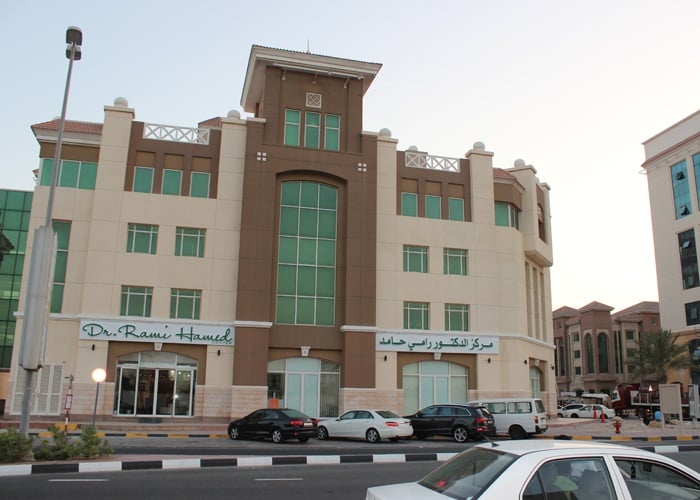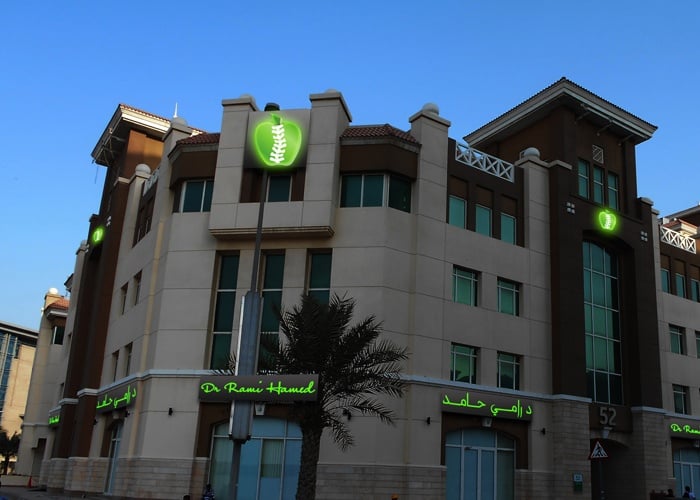Hiatal Hernia at DRHC Dubai
A hiatal hernia develops when the stomach is pushed through the diaphragm. The diaphragm is a membrane in our abdomen that separates the heart and lungs in our chest from other organs in the abdomen, keeping all organs in place. It looks like a muscular layer that's shaped like a dome, located between the two cavities, and moves up and down to help breathe. It also has a smooth surface with no openings or holes, and key structures and vessels run through it.
The largest organ in the chest area is the esophagus, as it connects the back of the mouth to the stomach, and it is how the food is pushed down to the stomach for digestion. The diaphragm lies just above the stomach, tightly surrounding the esophagus, and keeping the other organs and tissues in the abdomen in place. The narrowing at the end of the esophagus helps prevent the stomach's contents from moving back up into the esophagus. When a part of the upper stomach pushes through the diaphragm at the point where the stomach and the esophagus meet, that's when a Hiatal Hernia occurs.
Read: Latest Techniques of Laparoscopic Hernia Repair
Causes:
- The cause of the weaknesses in the diaphragm that lead to a hiatal hernia isn't known to us, yet, there's one potential cause for Hiatal Hernia, which is pressure on the diaphragm; the risk of this gets higher in some people with certain genetic factors.
- Another cause might be a congenital anomaly in the diaphragm, but it is rare.
- Having an Injury in the diaphragm due to any trauma caused by a fall or an accident might also cause a Hiatal Hernia.
- Surgical procedures that involve the food pipe may increase the risk of forming a Hiatal Hernia.
Read: How to do Laparoscopic Hernia Repair?
Risk Factors:
Many risk factors make it more likely to cause a weakening of the hiatus (the opening in the diaphragm that allows tissues of the esophagus to pass). Some of these factors are:
- Age: A hereditary hernia is common among people over 50 years old.
- Obesity: It's more likely to happen to people suffering from obesity.
- Pregnancy often affects women when it comes to Hiatal Hernia, as having a growing fetus in the abdomen pushes the abdominal organs upward, so it's likely to cause them to bulge through the diaphragm where it meets the esophagus.
Other risk factors include:
- An upward force due to lifting a heavy weight.
- Straining much to empty the bowel
- Persistent coughing
These factors usually increase the pressure inside the abdomen temporarily
Read: 20 Q&A about Laparoscopic Hernia Repair
Symptoms:
Normally, a Hiatal Hernia doesn't cause symptoms, and as a result, it can only be detected by a medical professional by chance when someone has other complications and undergoes scans for a completely different reason.
Usually, there are 2 types of Hiatal Hernia:
- Sliding Hiatal Hernia: It is the most common type and is usually small; these hernias do not stay in one fixed position but can move up and down.
- Fixed or rolling Hiatal Hernia: it is less common, it occurs in the shape of a bulge through the diaphragm, but remains still.
Both types often do not cause symptoms.

However, when someone with a hiatal Hernia has symptoms, it's usually because of the acid moving up to the esophagus from the stomach. That acid causes the feeling of heartburn (a burning sensation in the lower chest). Heartburn can also get worse due to consuming certain foods and beverages, and often occurs when someone is lying down or bending over, especially soon after eating. It might also cause bloating, belching, and a bad taste in the back of the throat.
If heartburn becomes a regular problem, this might signify that a person has acid reflux, which is a condition where heartburn occurs at least twice a week. If acid reflux occurs regularly for a long period, then it might progress to gastroesophageal reflux disease (GERD).
Read Possible complications after Laparoscopic hernia repair.
Treatment:
There are many options for Hiatal Hernia treatment:
Medication:
- It can be used to relieve heartburn; these include antacids, which can be in the form of liquids or chewy tablets that reduce the acidity of the stomach contents.
- Alginate products might also help; they make a foamy gel layer at the top of the stomach, providing a barrier to its acidic contents.
- Doctors might prescribe stronger medications, such as H2 blockers (ranitidine) and proton pump inhibitors (lansoprazole), to people with persistent symptoms.
Read: How to sleep comfortably with a Hernia
Surgery:
- In specific cases, surgery may be required under general anesthesia, like when people with severe and long-term reflux problems. They may need to consider having a Hiatal Hernia surgery if their lifestyle changes and drug treatments are no longer effective.
- Hiatal Hernia Surgery is also necessary if the Hernia becomes large enough to disrupt the blood supply.
- Hiatal hernia surgeries are laparoscopic. Laparoscopic means that it is a minimally invasive surgery, where surgeons perform these procedures through small cuts, so they are less invasive than open surgery, which requires a large incision.
- A laparoscopic Nissen fundoplication is one of the standard procedures for treating sliding Hiatal Hernias. Usually, it lasts for up to 90 minutes and aims to pull the stomach back into place while tightening the diaphragm around the esophagus to prevent further bulging of the hernia.
Read: Experience and Vision of Laparoscopic Hernia Repair
Prevention:
Knowing that obesity is a risk factor for having a Hiatal Hernia, losing weight could help reduce the risk for many people. Yet, there's nothing to help prevent the other known causes and risk factors of Hiatal Hernia.
To reduce Heartburn:
Changing diet and drinking habits can help reduce heartburn symptoms. Anyone can benefit from these changes if he/she decrease the following:
- Overall meal size
- portion size
- Consumption of specific foods that trigger reflux
Reducing the intake of some foods and beverages can help minimize symptoms, such as:
- alcohol
- caffeine
- Chocolate
- tomatoes
- fatty or spicy foods
The timing of eating and drinking is also a factor because mealtimes affect when acid might flow back into the esophagus. People who experience heartburn should sit upright while eating and have their meals at least 3 hours before lying down to sleep.
Raising the head end of the mattress so that the bed slopes slightly down toward the feet might also help reduce symptoms. However, the whole body needs to be at an incline, not just the head.
*Find out more about Laparoscopic Hernia Surgery Cost*
.png?width=281&height=59&name=bookanappointment%20(1).png)
Our Hernia Surgery Clinic at DRHC provides the best Laparoscopic Surgeon in Dubai, with wide experience in Laparoscopic Hernia Surgery, Inguinal Hernia Surgery, Umbilical Hernia Surgery, Hiatal Hernia Surgery, Hernia repair with mesh, and much more. To book your Appointment, please call +97142798200.





.png?width=281&height=59&name=bookanappointment%20(1).png)
.webp?width=1080&height=1080&name=Doctor%20background%20For%20Website%20Dr.%20Fadi%20Nageeb%2009%20(1).webp)
.webp?width=1080&height=1080&name=Doctor%20background%20For%20Website%20Dr%20Abdul%20Majeed%20Khalid%20%2002%20(1).webp)



